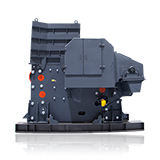Ethiopia Basalt Crushing Plant Equipment and Process
Ethiopia, known for its diverse geology and abundant natural resources, has significant deposits of basalt, particularly in regions with weathered basalt formations. The country’s basalt crushing production lines typically utilize a combination of jaw crushers and impact crushers, particularly due to the unique characteristics of the local basalt. While cone crushers are commonly employed in other countries for basalt processing, the weathered nature of Ethiopian basalt makes impact crushers a preferred choice for many local operators.
This article delves into the specifics of basalt crushing plant in Ethiopia, focusing on the equipment used, the crushing process, and the advantages of using impact crushers in this context.

Characteristics of Ethiopian Basalt
Ethiopian basalt is primarily characterized by its weathered state, which significantly influences the choice of crushing equipment. The weathering process can lead to a softer and more friable material, making it easier to crush compared to fresh basalt. This property allows for the effective use of impact crushers, which excel in breaking down softer rocks and producing high-quality aggregates.
Common Rock Types and Their Properties
- Weathered Basalt: The predominant rock type in Ethiopia's basalt deposits, which is often softer and easier to process.
- Fresh Basalt: Found in some areas, but less common; typically requires more robust crushing solutions like cone crushers.
Southern vs. Northern Ethiopia variations
- South: Common output sizes 0-5-10-20mm
- North: Often requires 0-5-10-31mm gradation
Ethiopia Basalt Crushing Equipment
The primary equipment used in the basalt crushing production lines in Ethiopia includes:
1. Jaw Crusher
The jaw crusher is often the first stage in the crushing process. It is designed to break down large blocks of basalt into smaller, manageable sizes. The jaw crusher operates on a simple principle: as the movable jaw plate moves back and forth, it crushes the material against the fixed jaw plate.
Advantages of Jaw Crushers:
- High Crushing Ratio: Capable of reducing large rocks to smaller sizes efficiently.
- Durability: Robust construction ensures long service life.
- Versatility: Suitable for various materials, including weathered basalt.
2. Impact Crusher
The impact crusher is the second stage in the crushing process and is particularly favored in Ethiopia due to the weathered nature of the basalt. The impact crusher uses high-speed impact forces to break down the material, making it ideal for producing fine aggregates.

Advantages of Impact Crushers:
1. Optimized for Soft Materials
Impact crushers excel in processing softer, weathered basalt due to their high-speed impact mechanism, making them more efficient than cone crushers, which are designed for harder materials.
2. Superior Aggregate Quality
The impact crushing technique yields aggregates that are not only cubical in shape but also possess a consistent size distribution, making them ideal for a wide range of construction and engineering applications.
3. Cost-Effective Operation
With generally lower maintenance requirements and reduced energy consumption, impact crushers offer a more economical solution over time compared to cone crushers, resulting in significant operational savings.
4. Versatile Particle Size Control
Impact crushers provide adjustable settings for rotor speed and impact plate gaps, allowing for precise control over the size of the produced aggregates, accommodating various project specifications.
5. Reduced Risk of Clogging
Unlike cone crushers, which can struggle with sticky or clay-rich materials, impact crushers are less prone to clogging, ensuring smoother operation and less downtime during the crushing process.
Typical Basalt Crushing Production Process
The basalt crushing production line in Ethiopia typically follows these steps:
1. Material Feeding
The raw basalt is fed into the jaw crusher using a vibrating feeder. This ensures a uniform flow of material into the crusher, optimizing the crushing process.
2. Primary Crushing
The jaw crusher breaks down the large basalt rocks into smaller pieces, typically ranging from 100 mm to 200 mm. The output from the jaw crusher is then transferred to the impact crusher for further processing.

3. Secondary Crushing
In the impact crusher, the smaller basalt pieces are subjected to high-speed impacts, resulting in further size reduction. The output from the impact crusher can be adjusted to produce various sizes of aggregates, including:
- 00: Fine aggregates
- 01: Medium aggregates
- 02: Coarse aggregates
4. Screening and Classification
After the secondary crushing, the material is screened to separate the different sizes of aggregates. Commonly, the output aggregates are classified into size ranges such as 0-5 mm, 0-10 mm, and 0-20 mm. Some production lines may also produce aggregates in the range of 0-5 mm, 0-10 mm, and 0-31 mm, depending on customer requirements.
5. Stockpiling
The final products are then stockpiled for delivery to customers. The stockpiling area is organized to facilitate easy access and loading of the aggregates.
Production Capacity
In Ethiopia, basalt crushing production lines typically have a production capacity of up to 300 tons per hour. This capacity can vary based on the specific equipment used and the characteristics of the raw material. Additionally, some operators may consider using the 01-grade material for sand production, further diversifying their product offerings.
Foundation Types
The foundation for the crushing equipment in Ethiopia can vary based on local conditions. Common foundation types include:
- Steel Frame Foundations: Often used for their ease of installation and flexibility.
- Concrete Foundations: Provide a more permanent solution and are preferred for larger installations requiring stability.
Ethiopia's basalt crushing operations demonstrate how tailored equipment selection can maximize efficiency in challenging conditions. The proven "Jaw Crusher + Impact Crusher" solution delivers three critical advantages for the local market:
- 1. Geological Adaptation - Perfectly handles weathered basalt's unique properties
- 2. Economic Efficiency - Lower operational costs versus traditional cone crusher setups
- 3. Production Flexibility - Meets diverse gradation requirements (0-5mm to 10-31mm)
As Ethiopia accelerates its infrastructure development, these crushing plants will play an increasingly vital role. For contractors and plant operators, understanding this optimized approach means:
- ✓ Higher profitability through reduced wear costs
- ✓ Greater operational reliability in dry processing
- ✓ Ability to meet both northern and southern Ethiopia's aggregate specifications







